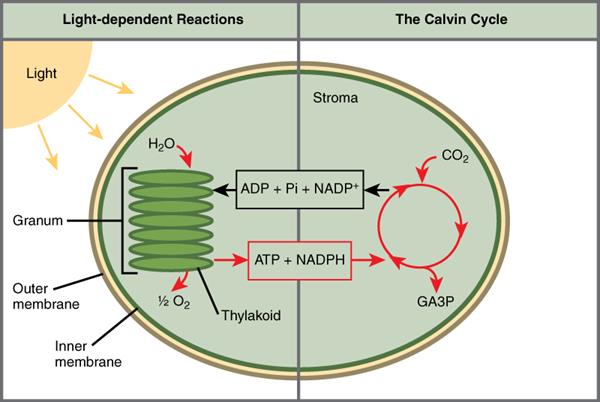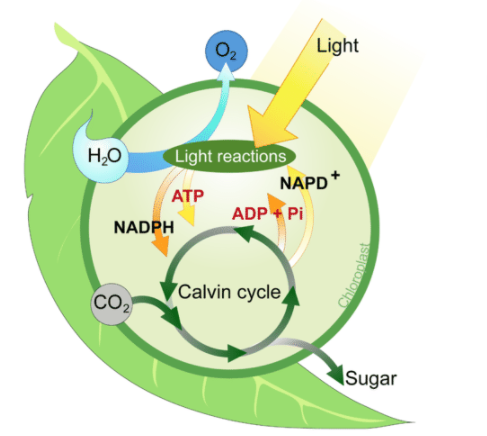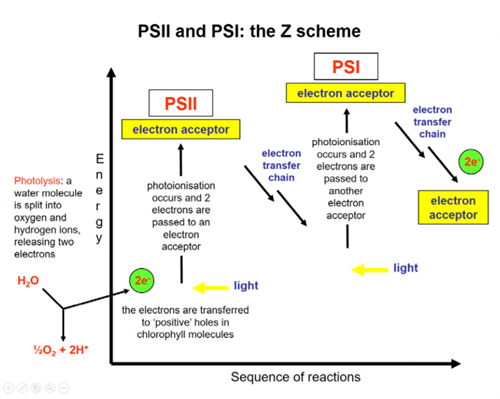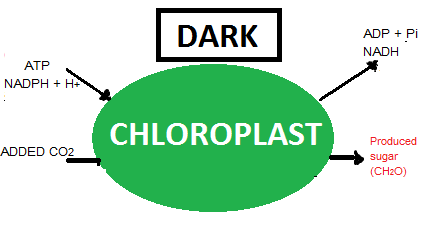
PUMPA - SMART LEARNING
எங்கள் ஆசிரியர்களுடன் 1-ஆன்-1 ஆலோசனை நேரத்தைப் பெறுங்கள். டாப்பர் ஆவதற்கு நாங்கள் பயிற்சி அளிப்போம்
Book Free DemoThe mechanism of photosynthesis takes places two sequential stages:
- The light dependent reactions and
- The light-independent reactions ( cycle or Calvin cycle)

Mechanism of photosynthesis
1. Light dependent reactions:

Light reactions
- Light-dependent processes occur in the thylakoid membrane and require a constant source of light energy.
- The light-dependent processes overall goal is to transform light energy into chemical energy. The Calvin cycle will use this chemical energy to fuel the construction of sugar molecules.
- These reactions start in a photosystem II, which is a collection of pigment molecules and proteins.
- A photon of light travels to hits a chlorophyll molecule. An electron in chlorophyll "excited" as a result of the photon hit. The electron is given enough energy to liberate from one of the chlorophyll molecule's atoms. As a result, chlorophyll is said to "donate" one electron.
- In order to replace this electron in the chlorophyll, the water molecule is split, releasing oxygen and hydrogen electrons (refer to the previous theory).
- The energy absorbed by the chlorophyll is converted and stored as chemical energy in the form of ATP and NADPH (electron carrier molecule).
All the electrons emitted in the light-dependent reactions are carried to photosystem II by a set of electron carriers (will be discussed in higher classes). The ATP and NADPH synthesized are also passed to the photosystem II. - This whole process of electrons or energy transfers from one photosystem to another photosystem in the form of a Z symbol and is known as the Z-scheme.

The Z scheme of Photosystems
Image Credits: Photosynthesis - PS I & II
2. Light independent reactions:

Calvin cycle
- These are the reactions that take place in the stroma and do not directly require light.
- Instead, these reactions use ATP and NADPH, electrons formed in the light-dependent reaction to reduce carbon dioxide into glucose.
- In this process, ATP is broken down to release energy, and the NADPH donates its electrons to convert carbon dioxide molecules into sugars.
- This is also known as the Calvin cycle and includes a series of reactions discussed in your higher classes.
- All the plants which undergo this cycle are known as plants.
Reference:
https://commons.wikimedia.org/wiki/File:Figure_08_01_06.jpg
https://physicscatalyst.com/biology/photosynthesis-in-higher-plants.php
https://upload.wikimedia.org/wikipedia/commons/2/2f/Hill_reaction_4.png
https://www.ck12.org/book/ck-12-biology-advanced-concepts/section/5.4/